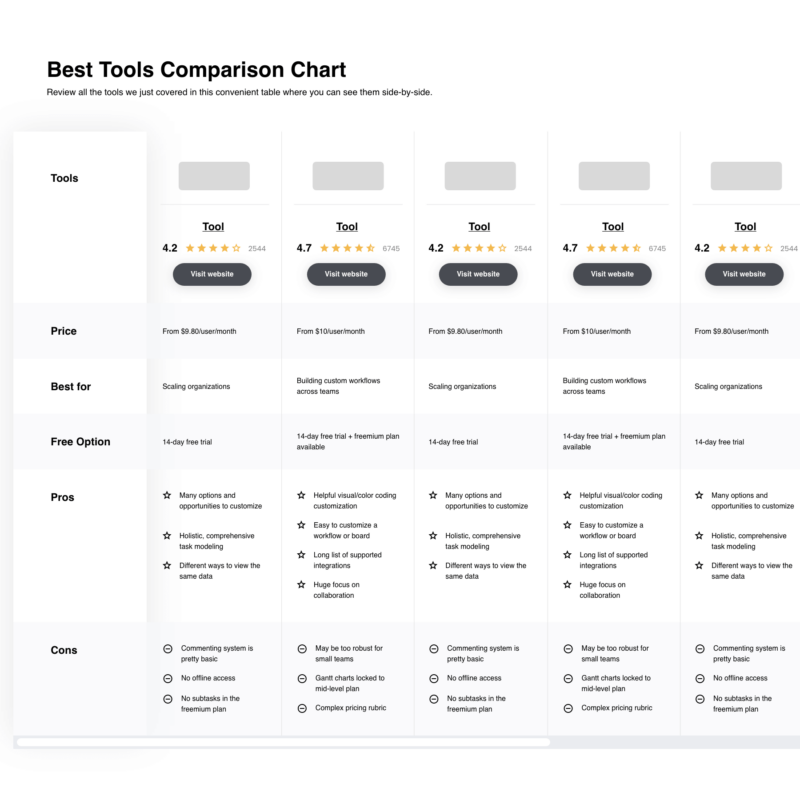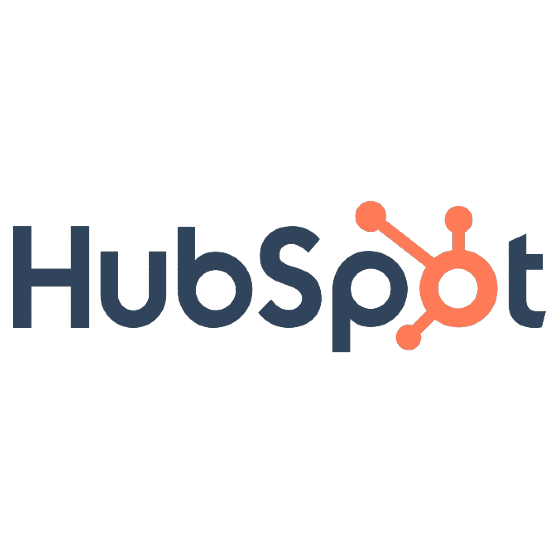10 Best Landing Page Builders Shortlist
Here's my pick of the 10 best software from the 20 tools reviewed.
There are seemingly countless landing page builders available, so figuring out which is best for you is tough. You want to easily construct and customize landing pages that capture visitor attention and drive conversions, such as sign-ups or sales—but now need to figure out which tool is the best fit. I've got you! In this post, I make things simple, leveraging my managing and marketing for online stores of all sizes, and using dozens of different landing page tools to bring you this shortlist of the best landing page builders overall.
What are Landing Page Builders?
Landing page builders are straightforward, user-friendly tools designed to create single web pages, known as landing pages, which are focused on a specific marketing or advertising campaign. These builders provide templates and intuitive interfaces, allowing users to easily design, customize, and publish pages that aim to convert visitors into customers or leads. They are essential for businesses looking to efficiently craft targeted, engaging online experiences without needing extensive technical skills, thereby enhancing their digital marketing efforts.
Overviews Of The 20 Best Landing Page Builders
Here’s a brief description of each landing page builder to showcase each one’s best use case, some noteworthy features, screenshots, and pricing information.
HubSpot is a popular CRM solution that offers a built-in page builder to help users create professional-looking designs quickly.
Why I picked HubSpot: This tool allows you to design and launch custom landing pages easily without technical expertise. You can choose from a library of mobile-optimized templates or build new pages using the drag-and-drop editor. It’s simple to dynamically show different content based on a visitor’s location, device, lifecycle stage, or contact information.
The centralized dashboard helps you identify your top-performing landing pages. You can also test variations against each other to find the best performer. Thanks to the custom SEO suggestions, you can also optimize each page for search.
HubSpot Standout Features and Integrations
Features include a template library, drag-and-drop editing, A/B split testing, mobile optimization, page analytics, personalization, and integration with HubSpot CRM.
Integrations include CloudTalk, Drift, Eventbrite, Google Calendar, Google Sheets, Hive, LinkedIn, Mailchimp, Slack, and Stripe.
Pros and cons
Pros:
- Drag-and-drop functionality
- Easy to use
- Native integration with HubSpot CRM
Cons:
- Limited to HubSpot users
- More templates required
Unbounce is an AI-powered landing page builder with smart features that help you create stunning, high-performing online marketing campaigns in minutes.
Why I picked Unbounce: Whatever your skill level, you’ll find Unbounce easy to work with. And thanks to the personalized recommendations, you’ll be able to optimize every stage in your funnels. Unbounce also includes AI-powered copywriting tools, so you can instantly generate, remix, and expand content for any purpose.
The software also uses AI to route visitors to the best landing pages for people like them, significantly increasing signups. For search ads, you can pair each ad with a dedicated landing page to improve your quality score and reduce the cost per click. Social media visitors can be directed to targeted, mobile-optimized pages.
Unbounce Standout Features and Integrations
Features include a preview smart builder, smart copywriting, apps, page templates, asset library, and product security.
Integrations include Calendly, Jotform, Stripe, Typeform, Shopify, PayPal, Facebook, Google Analytics, Giphy, and Pexels.
Pros and cons
Pros:
- Easy to add extra Javascript
- Quality landing page templates
- Simple to follow the prospect’s journey
Cons:
- Conversion tracking can be tricky
- Mismatch between desktop and mobile designs
Instapages offers a landing page builder that creates fast-loading, AMP-ready web pages optimized for maximum conversions.
Why I picked Instapages: Leadpages offers over 500 page layouts, all thoroughly tested and optimized for conversion. Pages can be built with or without AMP, achieving near-instant page loads either way. Collaboration tools are standard within the system, so anyone on your team can comment or make a contribution.
Using the library of content blocks, you can save elements, reuse them or update pages globally. The intuitive drag-and-drop builder empowers anyone on your team to create beautiful, high-converting pages quickly. You can also take advantage of the pixel-precision design features and a library of global brand assets to ensure your pages are always on-brand.
Instapages Standout Features and Integrations
Features include built-in collaboration, content blocks, AMP-readiness, drag-and-drop editing, 500+ layouts, and a brand-asset library.
Integrations include Google Ads, Facebook Ads, Taboola, Adroll, Rollworks, Twitter Ads, LinkedIn Ads, Microsoft Ads, BrightRoll, and Perfect Audience.
Pros and cons
Pros:
- Extensive customization options
- Powerful tools
- Dynamic page titles
Cons:
- No HTML export option
- Limited metrics
Landingi offers you a simple drag-and-drop builder for quickly creating, launching, and optimizing landing pages.
Why I picked Landingi: Getting started with Landingi is easy, thanks to the extensive library of fully-customizable templates. You get user-friendly tools for creating and measuring landing pages, pop-ups, lightboxes, and sales funnels.
You can choose from a range of widgets for your landing pages and use the testing tools to evaluate their performance. It’s also easy to integrate forms into your pages to collect leads. The sophisticated analytics module gives insights into critical stats such as conversion rates.
Landingi Standout Features and Integrations
Features include A/B testing, a rich template repository, a content library, email notifications, custom domains, and a WordPress plugin.
Integrations include ConvertKit, HubSpot, Keap, LeadByte, LeadsBridge, Pipedrive, Salesforce, SugarCRM, and ActiveCampaign.
Pros and cons
Pros:
- Extensive functionality
- Simple to navigate
- Unlimited landing pages
Cons:
- Limited analytics
- Occasional bugs
Aweber is a well-established digital marketing platform with its powerful, flexible landing page builder.
Why I picked Aweber: This tool allows you to create unlimited, custom landing pages using drag-and-drop functionality. A native integration with Canva makes it easy for even newbies to create stunning designs quickly and easily.
You can create working pages without having to build your own website. The page builder integrates seamlessly with the Aweber CRM, allowing you to store both landing page and email images in the same place. A library of free stock images is included to help you get the exact look you need.
Aweber Standout Features and Integrations
Features include a template library, integration with Aweber CRM, integration with Canva, and drag-and-drop functionality.
Integrations include GoToWebinar, WordPress, Paypal, AppDrag, Digital Access Pass, Blogger, Elegant Themes, Raven Tools, S2 Member, and WPSubcribePro.
Pros and cons
Pros:
- Designed for non-technical users
- Wide range of templates
- Easy to use
Cons:
- Limited functionality
- Not suitable for non-Aweber users
Leadpages is a great landing page tool that helps you build sophisticated websites, specialist pages, pop-ups, sticky bars, and sales funnels.
Why I picked Leadpages: As well as building out professional lead capture pages and other elements, you can use Leadpages to connect to tools such as webinar platforms, payment processors, and marketing automation systems. Plus, the real-time dashboard lets you view campaign performance and analyze your return on investment.
The code-free system makes it easy for anyone to build conversion-optimized designs, without the need for programming or technical experience. In addition, the software gives you optimization tips in real-time, so you can predict a page’s performance before you even publish. You can also run split tests and analyze results using advanced analytics.
Leadpages Standout Features and Integrations
Features include code-free publishing, A/B testing, multivariate testing, optimization recommendations, detailed analytics, ready-made templates, and a real-time dashboard.
Integrations include Google Analytics, Hotjar, Contactually, Salesforce, Bing Ads, Facebook Ads, Google Ads, Taboola, SendOwl, and Shopify.
Pros and cons
Pros:
- Frequently updated
- High-converting designs
- Lightweight pages
Cons:
- Limited image functionality
- Old-school interface
Marketing 360 is an aggregated service platform offering various solutions for PPC marketers. Tools offered include web building, email marketing, social media marketing, SMS marketing, videos, and more.
Why I picked Marketing360: Entrepreneurs can start with one of the professional designs for their industry, or build a whole new page from scratch. It’s easy to customize any element to match your brand and style.
Pages can be optimized to work well for pay-per-click advertising and other forms of promotion. You have the flexibility you need to optimize pages until they get the results you want.
Your finished pages will integrate readily with the rest of the Marketing 360 platform, including forms, CRM, payments, scheduling, email automation, customer support, and analytics.
Marketing360 Standout Features and Integrations
Features include page building, email list management, social media marketing, SMS marketing, and videos.
Integrations include WooCommerce, Shopify, Gravity, Facebook, Google, Bing, Quickbooks, Yext, Top Rated Local, and Stripe.
Pros and cons
Pros:
- Well-designed software
- Simple to use
- Easy-to-understand analytics
Cons:
- Can be glitchy
- More customization options required
Elementor helps you create high-converting landing pages for WordPress quickly and easily, without requiring you to know code.
The software offers a large selection of mobile-responsive templates. You can build pages rapidly using the drag-and-drop editor, then add custom forms to generate leads and optins.
Why I picked Elementor: Elementor allows you to add advanced styling, layout, and design elements to your WordPress content. In the pro version, you can also design complete WordPress themes from the ground up.
Another option is to Import a pre-built Elementor template, then deconstruct it to see how the designer built the page. This way, you can get insights into the advanced options and build something similar.
Elementor Standout Features and Integrations
Features include an advanced editor, workflow optimization, design capabilities, ecommerce features, email marketing tools, and a theme builder.
Integrations are available with a wide range of WordPress plugins.
Pros and cons
Pros:
- A great time saver
- Integration with SEO plugins
- Feature-packed
Cons:
- Display issues in some browsers
- No way to export pages in HTML
Wix is a popular website-building platform designed to help anyone with an idea to get a website up and running quickly.
Why I picked Wix Landing Page Builder: The Wix tool is an excellent option for someone who is new to online marketing and needs to get up to speed quickly. It features robust customization options, a range of ecommerce tools, and an interface that will feel familiar to Photoshop users.
No coding skills are required. You can create beautiful pages using the drag-and-drop interface or use the built-in wizard to uncover the tailored design that’s right for you. The editor also features numerous widgets, and hundreds of templates are available.
Wix Landing Page Builder Standout Features and Integrations
Features include multiple widgets, a drag-and-drop interface, mobile site-building tools, web-store functionality, and support for digital downloads.
Integrations include Hubspot, Google Analytics, Facebook, Mailchimp, Google Ads, Yandex Metrica, Privy, VWO, Crazyegg, and Hotjar.
Pros and cons
Pros:
- Intuitive interface
- Excellent security
- Rapid page creation
Cons:
- Customizing designs can be tricky
- More functions needed
Seedprod is a drag-and-drop landing page builder designed especially for WordPress users. It can be used to create optimized landing pages or custom themes.
Why I picked Seedprod: This simple-to-use page builder allows you to create pages in WordPress without coding. The software includes various blocks for displaying static and dynamic content. You can easily build headers, footers, pages, posts, archives, sidebars, and WooCommerce pages.
You can get up to speed fast by drawing on the extensive library of pre-built themes. Alternatively, you design custom pages that suit your precise requirements. You can build any type of landing page, including sales, optin, coming soon, maintenance mode, webinar, login, and thank you pages. New templates are added regularly.
Seedprod Standout Features and Integrations
Features include a template library, point-and-click customization, content blocks, ready-made page sections, color palettes, fonts, access controls, and custom 404 pages.
Integrations include ActiveCampaign, Aweber, Campaign Monitor, Constant Contact, ConvertKit, Drip, GetResponse, iContact, Mailchimp, and MailerLite.
Pros and cons
Pros:
- Clean page builder
- Built-in theme builder
- Access to millions of stock photos
Cons:
- Moving content blocks can be tricky
- No A/B testing
The Best Landing Page Builders Summary
| Tools | Price | |
|---|---|---|
| HubSpot | From $45/month | Website |
| Unbounce | From $99/user/month | Website |
| Instapage | From $299/user/month | Website |
| Landingi | From $49/user/month | Website |
| AWeber | From $29.99/user/month | Website |
| Leadpages | From $49/user/month | Website |
| Marketing 360 by Madwire | From $25/user/month | Website |
| Elementor | From $9.99/month (billed annually) | Website |
| Wix Landing Page Builder | From $4.50/user/month | Website |
| SeedProd | From $3.29/user/month | Website |

Compare Software Specs Side by Side
Use our comparison chart to review and evaluate software specs side-by-side.
Compare SoftwareOther Options
Here are a few more options that didn’t make the best landing page builder list:
- Kajabi
Best for upsell and cross-sell features
- Mailchimp Landing Page Builder
Best for a built-in content studio
- ClickFunnels
Best landing page builder for proven funnel templates
- Act-On
Best landing page builder for covering the full customer lifecycle
- EngageBay
Best landing page builder for sales automation
- GetResponse Landing Page Builder
Best landing page builder for drag-and-drop page building
- Wishpond
Best landing page builder for pages that load fast
- HeyFlow
Best landing page builder for creating interactive flows GetResponse Landing Page Builder
- Swipe Pages
Best landing page builder for creating mobile optimized AMP landing pages
- Keap Pro
Best landing page builder for personalized communication
How I Selected the Best Landing Page Builders
Perhaps you're wondering how I selected the best landing page builders for this list. To build this top 20 list, I evaluated and compared many landing page builders with positive user ratings.
After determining my list of top choices, I further honed my list by using the selection criteria below to see how each platform stacked up against the next one. I also drew on my years of ecommerce experience to pinpoint the features that add a lot of value.
Selection Criteria
Here’s an overview of the primary selection and evaluation criteria I used to develop my list of the best landing page builder for this article:
Usability:
I’m seeking landing page builders that are intuitive and easy to use. Even novice users should be able to grasp the main functions quickly.
Templates:
The best tools offer a wide range of page templates covering various needs. Good templates can significantly accelerate the page-building process.
Mobile Optimized:
In today’s world, most traffic comes from mobile devices. So it’s non-negotiable that a page builder must help you create fully mobile-ready pages.
Software Integrations:
The best landing page builders integrate easily with popular software tools. In particular, they should offer integrations with email software, CRMs, and webinar platforms.
Pricing:
I look for design software that’s affordable for all users on a per-user basis. Costs should make sense for organizations ranging from one-person startups to enterprise-level corporations.
People Also Ask
What are Landing Page Builders?
How Do I Create My Own Landing Page?
How Much Does It Cost To Hire Someone To Build a Landing Page?
What are the Key Features of Landing Page Builders?
What Other Ecommerce Tools Should I Use?
Time to Start Building!
If you find this article helpful, be sure to sign up for our newsletter, too. That way, we can keep you up to date with ideas from thought leaders in this niche.
Now you have the skinny on the top landing page builders, all you have to do is select the one that’s right for you. Then it’s time to start building high-converting landing pages and generating leads and sales on autopilot.




















